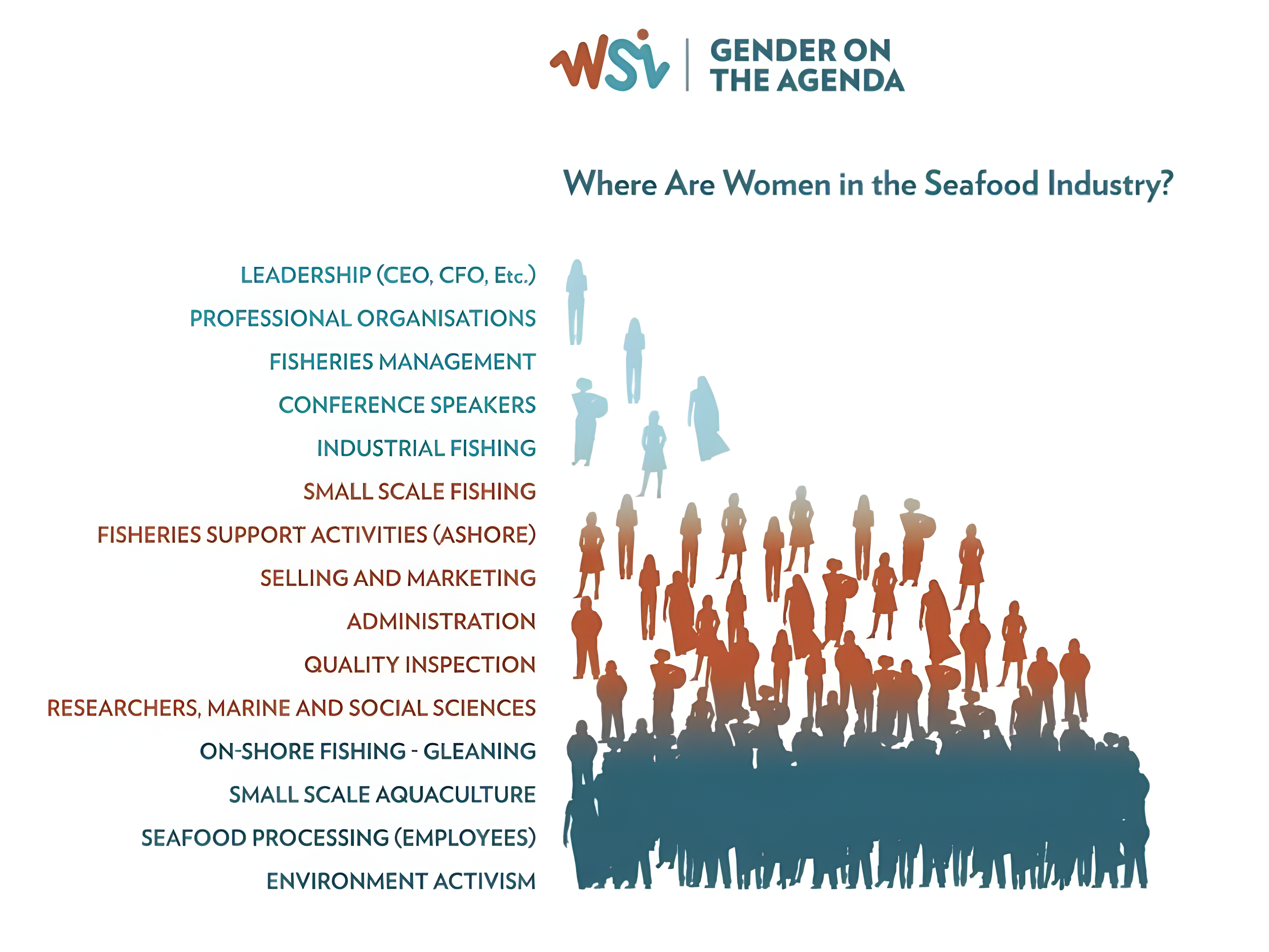Photos: Imagebank Sweden, Fredrik Broman and iStock
Women on the factory floor
The most numerous studies about women engaged in the maritime sector relate to the field of fish processing. Most of them are from Iceland and Northern Norway. Fewer studies are based on research in Sweden, Denmark and Finland.

Figure 11. Women are most present globally in the field of seafood processing.
Source: WIS, 2021
Source: WIS, 2021
National and global socio-economic changes in the last decades of the 20th century have led to growth and change in women’s migration in many parts of the world (Audebert & Doraï 2006), including the North Atlantic region (Aure, 2011). That has become particularly pronounced in recent decades, with a more ethnically diverse labour force in fish factories and processing being one of the results of the outmigration of young people and women from fishery communities. The dominant mobility discourses tend to obfuscate the complexity and tensions felt especially by young women in the community (Norman and Power, 2015, Ouanian, 2016):
Despite the image of gender equality, a highly gender-segregated labour market persists. To a limited degree, that has been challenged by employment-related migration and ethnification in some of the labour market in recent decades (Júlíusdóttir, Skaptadóttir, Karlsdóttir, 2011, Yingst & Skaptadóttir, 2018). In the early 1990s, new management systems in fisheries led to decreased job security and job losses for inhabitants of smaller villages (Karlsdóttir, 2008; Karlsdóttir, 2009). Attitudes towards jobs in fish processing became more negative, with the jobs increasingly seen as degrading and associated with low levels of status and skills, not to mention low-paid and monotonous in tandem with increased automation of the industry (Karlsdóttir, 2008). That resulted in a general sense of disempowerment in fishery communities. Many women reported feeling stuck in an industry without future prospects (Skaptadóttir & Proppé 2005; Karlsdóttir 2006). Research in other parts of the Arctic has revealed similar processes leading to gender imbalances in migration from fishing towns (Hamilton & Seyfrit 1994; Rasmussen 2009).
As a result of Icelandic women leaving fish processing plants, where most of the labour-intensive tasks have been defined as “women’s work”, demand for workers could not be met internally (Skaptadóttir & Rafnsdóttir 2000; Skaptadóttir & Proppé 2005). The fishing industry started recruiting foreign temporary workers as long as thirty years ago (1980s). As more women immigrate to places like Iceland or other Nordic countries to work in fisheries, it is important to understand their roles and perceptions of their jobs, since work satisfaction can influence overall quality of life (Yingst and Skaptadóttir, 2018).
Figure 12. Iceland. Number of women and men employed in fish processing, 1991-2021.
Figure 13. Number of people employed in processing and preserving of fish by gender in Denmark, 2008-2021.
The most evenly balanced gender representation found in the maritime sector is in the field of fish processing. Comparability of the data is limited by the varying timeline of the available statistics, but the trend is clear.
Figure 14. Number of people employed in fish processing by gender in the Faroe Islands, 1985-2021.
In Iceland, the proportion of women employed in fish processing – which was higher than that of men in 1991 – decreased in the years leading up to 2021. The figures from the Faroe Islands show a similar pattern, with men outnumbering women in the processing workforce since 2010. In Denmark the gender ratio is almost even.
Overall, the figures reveal a decline in the total number of people employed in fish processing, reflecting also geographical shifts in the location of processing, either out seas or overseas.
We have not been able to find comparable data for Sweden, Finland, Greenland and Åland. The Swedish data concern fishery workers from 2005-2013 and show that women accounted for 19% of the fishery workforce in 2013, with the proportion of women gradually rising from 1 to 19% during the period 2005-2013. Finnish data were only available for 2008 and showed a female ratio of 28%, while the Åland data showed that the female ratio in fisheries and aquaculture combined was 18% in 2021 (ÅSUB, 2023). The Finnish data are the only statistical data that also show income for the group of fishery workers in the processing industry.